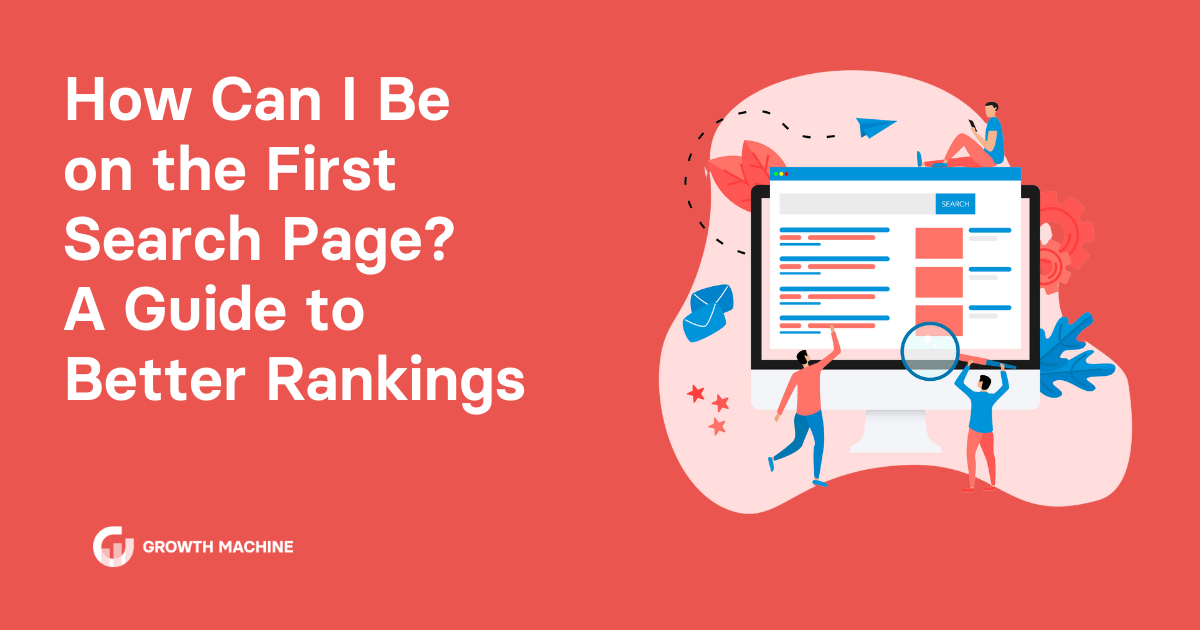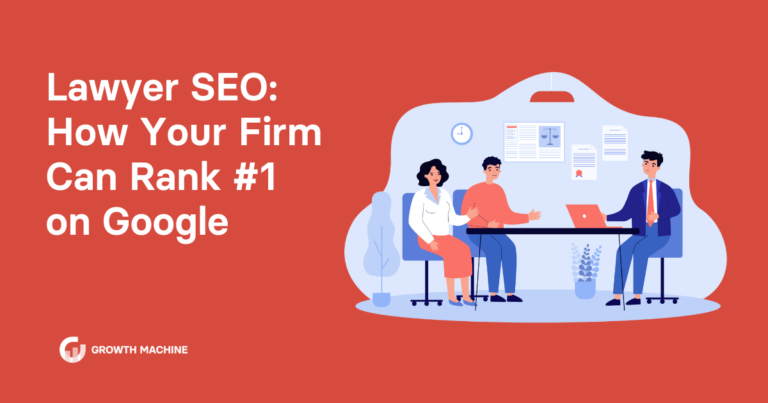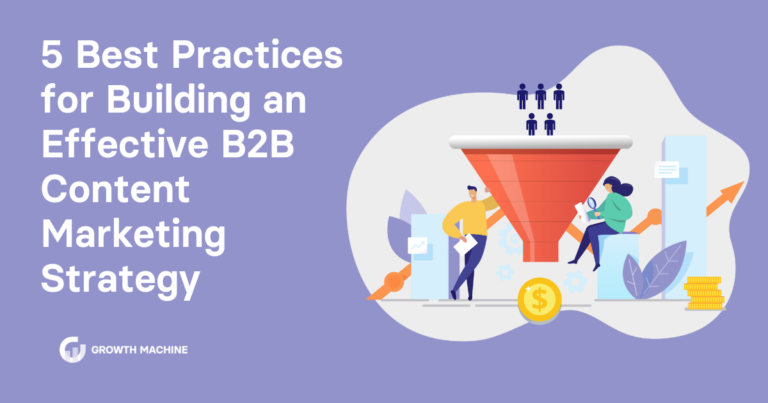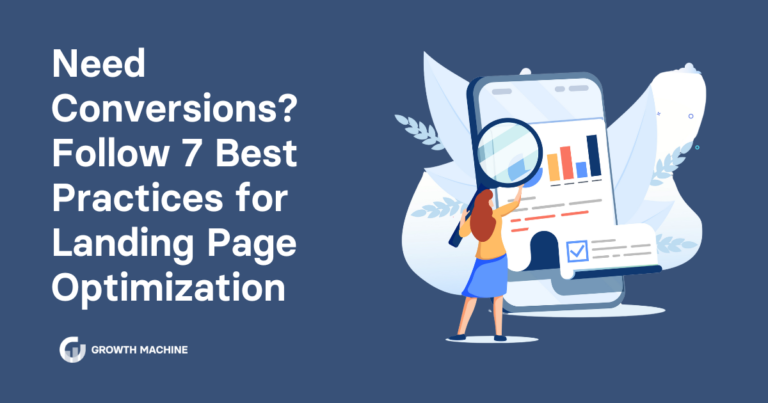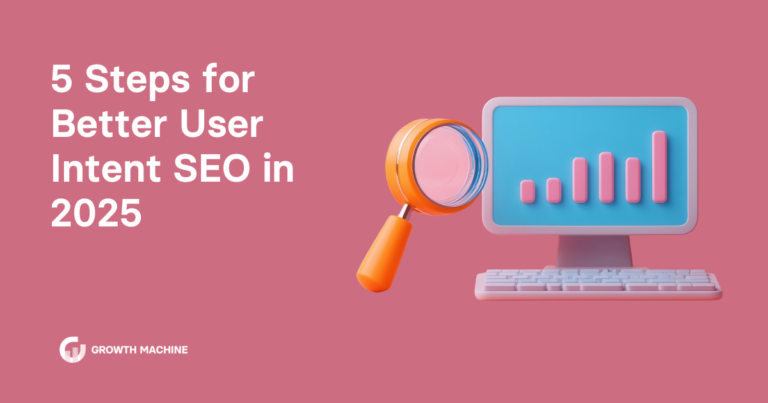How Can I Be on the First Search Page? A Guide to Better Rankings
As a business owner, the question of, “How can I be on the first search page of Google?” has probably crossed your mind at some point.
After all, who has time to peruse multiple pages of Google search results these days? Considering 75% of Google users never make it past the first page of search results, it seems not many people do.
Not being on that first page means falling behind in the race to capture more organic traffic and ultimately, more revenue for your business. But how can you sprint ahead of the competition and reach that coveted first page spot?
That’s where quality SEO (or search engine optimization) comes in. Producing thoughtful, well-written content that’s optimized for search engine algorithms is the best way to win the ranking race and land on the first search page. And this step-by-step guide will tell you exactly how to do it.
Factors That Influence Rankings
Landing your business on the first page of Google search results isn’t something that typically happens quickly. It’s a process that can take 6+ months, and requires an in-depth understanding of search engine algorithms.
Here are some key ranking factors that influence the speed at which you can climb the SERPs (search engine results pages):
- Competition: If you’re targeting highly competitive keywords, expect to face a steep climb. Businesses with larger SEO budgets and established domain authority can be tough to outrank, but it isn’t impossible. Focusing on long-tail keywords or local SEO strategies can often provide quicker wins.
- Industry: Some industries are inherently more competitive than others. If you’re in a niche sector that’s less saturated, you might find it easier and faster to rank on that first page.
- Audience intent: All Google searches start with one thing: a user query. This might be a question your audience is looking for answers to, or a topic they’re looking to explore more deeply. Understanding the search intent behind the keywords you’re targeting can help you better align your content with what users are seeking. Higher relevance = ascending the rankings more quickly.
- Backlinks: Backlinks are essentially a search engine’s seal of approval that your website is credible and trustworthy. Google considers both the number of backlinks pointing to your site and the quality of those links to determine your search position. Links from high-authority, relevant websites in your niche trump links from poor-quality sources every time, so never sacrifice quality for quantity.
- Content quality: The best way to scale the page rankings swiftly is to produce high-quality content that’s relevant to your targeted keywords and adds value to your readers. Remember: It’s not just about getting people to your site, it’s also about keeping them there.
- Search algorithms: Search algorithms are ever-evolving. If you want to improve your Google rankings faster, you need to monitor your performance metrics regularly and refine your SEO strategy to align with changes in search engine algorithms. Tools like Google Analytics and specialized SEO software can be tremendously helpful.
- Geographic location: For local businesses, geographic location can have a huge impact on how quickly you rank in localized results. Make sure to fill out your Google My Business profile to the fullest and make regular updates. Don’t overlook local directories and customer reviews, as these can also give a significant boost to local SEO efforts.
- User experience: We’ve all been to a website where no matter how many times you smash the refresh button, the page doesn’t seem to load fully. Not only is this incredibly frustrating for users, but it can be detrimental to your search ranking.
- Mobile compatibility: Nearly 60% of users are conducting searches via mobile devices. Google has even implemented mobile-first indexing, which means it primarily uses the mobile version of a site for ranking and indexing. If your website isn’t optimized for mobile with a fast load speed, kiss that spot on the first search page goodbye.
How Can I Be on the First Search Page? A Step-By-Step Guide
Getting to the first page of search results doesn’t just happen by accident. It takes a strategic, calculated approach to SEO, with a focus on quality content and user experience above all else.
Every marketer has a different opinion on where to focus SEO efforts. But generally, if you follow these steps, you should see your website start to pull ahead in the rankings.
1. Conduct Thorough Keyword Research
The first step to being on top of Google search is to meet your audience where they’re at.
This is done by understanding the exact language they use when searching for information, products, or services related to your business. By strategically weaving these keywords throughout your written content, you increase the likelihood of your website appearing in relevant searches.
For instance, let’s say you’re the owner of a car-sharing app. A keyword for your industry might be something as general as “car sharing,” but the real SEO magic lies in something called semantic variations.
Semantic keyword variations help you capture different nuances of user intent. This is especially important for targeting various use cases and more specific customer needs.
You might opt to target semantic variations such as “best car-sharing app for long roadtrips,” or “cheapest car-sharing app.”
At Growth Machine, we typically focus on targeting long-tail keywords for our clients first, since these search queries are more tailored to a specific niche and industry. They tend to be less competitive and easier to rank for, which means more eyes on your business and more traffic on your site.
Long-tail keywords like “car-sharing apps with low membership fees,” or “pet-friendly car-sharing services” speak to highly niche customer needs, making them invaluable for getting customers across the finish line. Don’t skip out on adding these into your keyword research.
So how do you figure out which keywords to target? Thankfully, the need for manual keyword research has been all but eliminated thanks to the emergence of some fantastic tools.
Keyword research tools like Google’s Keyword Planner, Semrush, or Ahrefs can help you gauge both keyword difficulty and search volume. This spares you a headache and wasted time spent targeting keywords that you have no hope of ranking for.
2. Craft Quality Content That Speaks to Your Target Audience
Once you’ve conducted thorough keyword research and identified the terms and phrases that resonate with your target audience, the next step is to create content that speaks to those search queries.
Search engines like Google prioritize content that’s not only well-written, but also speaks to user search intent, or what users are actively searching for. Quality content is also relevant for the current moment, and should contain the most up-to-date information.
Generally, you want to avoid fluff pieces or meaningless blogs filled with empty buzzwords. The goal should never be to stuff as many keywords in as possible, but rather to deliver informative content that provides genuine value or offers a solution to a problem your target customer has.
It all starts with understanding your ideal customer and their needs and pain points. Creating audience personas, conducting surveys, or even asking your audience directly via email marketing or social media can help you pinpoint what they find most valuable.
The more precisely you can tailor your content to address those needs or pain points, the more of an impact it will have.
Still trying to zero in on your niche? Check out how we helped a D2C beverage company grow 4x in search traffic in only 3 months by understanding their audience and building trust.
3. Optimize On-Page Elements
When it comes to optimizing your website content, small details are everything. On-page elements like meta tags, headings, and even the overall layout of your blog posts play a pivotal role in helping search engines like Google understand what your website is all about.
Here are some ways you can optimize different on-site elements to appease search engines and grab user attention:
- Incorporate keywords into your content titles and all levels of headings: Your target keywords should be seamlessly woven into the headers in your content (H1, H2, H3, etc.). They should serve as signposts that guide both readers and search engines through your content.
- Go for a clean content structure: When it comes to content structure, going back to basics is a tried and true strategy. Blog posts should contain a clear intro, body, and conclusion. Elements like bullet points and media like images or videos can break up large blocks of text, making it easier for readers to digest and elevating your content experience. Still feeling a bit stuck? Check out these 3 steps to SEO-friendly blog design.
- Keep meta tags short and sweet: The best meta tags are both compelling and concise, offering a clear snapshot of what’s to come. They should accurately summarize the content of the page, while hooking readers to make them want to click through to learn more.
4. Secure High-Quality Backlinks
If you have a new website and are building your backlink profile from scratch, we’ve written an entire guide on how to do backlink outreach that we recommend checking out.
The short version: You can garner high-quality backlinks through means like guest posting (creating content for an industry or popular blogger’s influencer’s website), promoting your best content on social media, and conducting cold email outreach.
When determining which methods are likely to garner the best links, focus on what resonates most with your target audience. Are they more likely to consume long-form content like blogs, or social media content on platforms like Facebook or LinkedIn? Think about your backlink partner’s audience as well and how your content can add value that makes it worthwhile to link back to your site.
Another thing to keep in mind is to aim for sites that have authority in your niche and are relevant to your audience, as these links will carry more weight and boost your reputation (and rankings) faster.
5. Create an Unparalleled User Experience
Many SEO experts get caught up on details like optimizing metadata and stuffing as many target keywords into their content as possible. Improving user experience is a less tangible, but equally important aspect of landing on that first page of search results.
A user-friendly website is built of several components, but here are a few of the most important:
- A user-friendly interface: Your site should be easy to navigate with an intuitive layout, clear headings, and straightforward menus.
- Quick load times: To improve your load speed, optimize your images in the right format, leverage browser caching, or consider a content delivery network (CDN) to speed things up.
- Mobile compatibility: For a seamless mobile browsing experience, always use a responsive layout that adapts to different screen sizes, and regularly test your mobile site for usability.
- Accessibility: Often overlooked, accessibility is a key part of user experience. Use fonts and color schemes that are easy on the eyes and enhance readability, as well alt text for images for the visually impaired.
Together, these factors work in harmony to keep visitors on your page longer, ideally with the goal of driving more conversions or sales. The longer visitors stay on your page, the better shot you have at ranking higher.
6. Monitor Rankings and Adjust Your Strategy Regularly
Staying on top of your website’s performance is not a “set it and forget it” kind of deal. Regular analysis is an ongoing commitment to your audience, ensuring that you serve them the best content and user experience every time.
It’s even more important when it comes to your search rankings. Search engine algorithms are ever-evolving. Monitoring your rankings can help you identify what’s working, spot potential challenges, and help you adapt your strategy to align with what search engines are looking for.
If you only use one tool for tracking your search ranking, we swear by Google Search Console. This service offered by Google allows you or your webmasters to check your site’s index status, popular search queries related to your site, and crawling errors so you can optimize your organic search rankings. This is essential if you want to position your website on that first search page.
What Not to Do If You Want to Get on the First Search Page
We’ve provided some solid best practices when it comes to understanding Google’s algorithm and getting your business up in the rankings. But we’ve also been around the block and have seen businesses make a handful of common mistakes that are easily avoidable.
Here’s what not to do when trying to get your name into those top results:
- Rushing the process: There’s nothing wrong with trying to climb the rankings faster, but patience is also a virtue when it comes to the question of how you can be on the first search page. Don’t sacrifice content quality or user experience by pumping out content too quickly in an attempt to beat the algorithms. All this does is hurt your rankings (and reputation) in the long run.
- Relying too much on paid ads: Don’t get us wrong — Google ads might get your name to the top of the search results, but they don’t actually improve your organic rankings. Start with creating great organic content first, then use the paid ads to amplify that content’s reach.
- Keyword stuffing: Using too many keywords can give your content the appearance of being spammy, and can actually drive users away from your site. Always incorporate your keywords naturally and in a way that offers value first.
- Duplicate content: Reproducing the same piece of content over and over can actually hurt your search rankings. Always prioritize the creation of new and unique content, and make sure you’re adding fresh value when updating older content.
How an SEO-Focused Agency Can Propel You to #1 Faster
Getting on Google’s first page of search results is a marathon, not a sprint. But that doesn’t mean you can’t have a great training partner to ease the workload and keep you on course.
If you’re looking for content strategy, creation, and optimization to boost your rankings faster, you’ve come to the right place. At Growth Machine, our team of specialized writers focus on creating thoughtful and well-written content that’s optimized for SEO and puts your audience first. The result? A coveted spot on that first search page and more organic traffic for your business.
Contact us today to learn how we can get your business onto the first search page faster.

